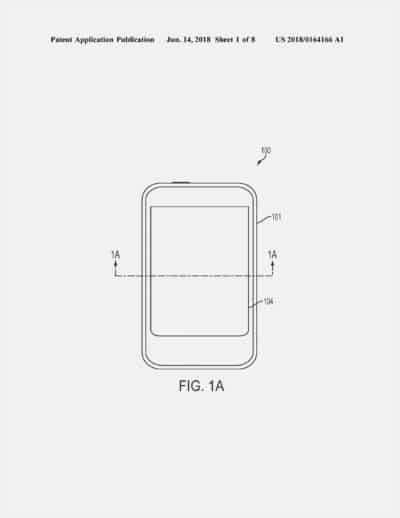While you’re still missing the headphone jack on an iPhone, prepare your mind for a future Apple handset without the side buttons.
Apple applied for a patent this morning on squeeze detection sensors that could replace the input buttons and add “deformable” walls to the housing.
Like any individual or corporation that makes products, Apple routinely files for patients. Even with U.S. Patent & Trademark Office approval, it may take years for a patented feature to show up. Often, the protected invention never makes it into production.
Edge sensors for smartphone housing are not new.
The Pixel 2 has what it calls “Active Edge” and the HTC U11 debuted last year with pressure-sensing sides. While the HTC smartphone received good performance reviews, some critics, such as C/NET’s Luke Lancaster, found it to be a distracting gimmick. He used voice commands to work around the squeeze features.
While Apple hypes its features and products like no other brand, it doesn’t claim to be first with an idea. But Apple has said it likes taking existing technology and making it better.
How will iPhone users react to such a change?

Document: Apple/USTPO
“Squeeze” could draw initial criticism similar to when Apple began producing iPhones without a headphone jack. People couldn’t imagine tuning out without plugging in until AirPods and other wireless earbuds and headphones rolled back the outrage.
Social media snark artists may also cry “gimmick” and compare a squeezable iPhone to a previous model that had a bending problem (remember BendGate with the iPhone 6 line?).
According to the application filed by Apple:
Electronic devices receive input from users via a variety of different mechanisms. Such mechanisms include buttons, keys, external input devices (such as computer mice, scanners, and so on), touch screens, and other such input mechanisms. However, providing such input mechanisms as part of an electronic device requires space on the electronic device. Additionally, such input mechanisms may complicate the electronic device and/or the aesthetic appearance of the electronic device. External input devices may not require space on the electronic device itself. However, they may still require a connector of some kind to be located on the electronic device and may be cumbersome for users to utilize, particularly in the case of portable and/or handheld electronic devices.
A force sensing compliant enclosure for an electronic device may include at least one deformable housing wall. At least one strain concentration portion may be located on the deformable housing wall where strain caused by application of a force that deforms the deformable housing wall is greater than at other portions of the deformable housing wall. The strain concentrating portion may have a second thickness that is thinner than other portions of the deformable housing wall. One or more sensors may be positioned in the strain concentration portion and may sense strain caused by the application of the force that deforms the deformable housing wall.
You can read the full application on the USPTO website.
Source: AppleWorld.Today


